Cordillera Huayhuash trekking or on the Peruvian Andes. – 2009
Geographers divide the Peruvian Andes or the Cordilleras 20 glacial mountain ranges. For better understanding: Karapaty – the name of the Ukrainian mountains, Montenegro Ridge – region in the Carpathians. Andes – South America Mountains, Cordilleras – a mountain chain in the Andes.
The most famous Cordillera Blanca, a length of 180 km. in the department of Ancash with the highest mountain Huascaran (6768m), This mountain is also the second largest in South America after the Aconcagua. Sometimes people have heard something about CordilleraVilcanota with the legendary Inca Trail
Cordillera Huayhuash lone mountain range, sometimes visible from the capital city of the Department of Ancash Huaraz. Yarupaja (6634m) – the third largest mountain in Peru and the highest in the Amazon basin. And it is precisely in the Cordillera Huayhuash. Also Huayhuash have 6 peaks over 6000m and more than 15 peaks over 5400m. The largest flying birds Andean Condor with a wingspan of more than 3 meters, we saw only in the mountain passes at altitudes of at least 4700m.
In the Cordillera Huayhuash 113 separate glaciers. The longest of them – 6km, while the lowest is at an altitude of 4150m. Snow accumulates in the 5000m.
Word Huayhuash in Quechua means according to different sources or type of vessel or a subspecies of rodent – inhabitants of these places.
By the way, about rodent. We tried to find a chinchilla, a popular domestic animal, it is a valuable fur., But local residents could not grasp what this beast. Finally, our guide remembered that in the Andes, but in a completely different region on the Height of a very large, you can find chinchilla. But, as she knows, it is extremely rare.
And the most common animal – viskacha – a mixture of rabbit, squirrel and shinshillly light sand color. The animals do not afraid people. Permit us very close. However, below 4500m, we have not seen them. They live among the stones, as in alpine hill.
Highland villages consist of only a few houses. Such houses are called choraz. They were made of stone and covered with grass, very dense. People live in these homes only in the winter period. Basically – for cattle grazing and tourist underworking in mountain regions. Many of them work part time as drovers donkeys (donkey driver). The houses have no electricity, the main fuel – dried cow dung. Living conditions are very primitive. Around poverty is rife and poverty.
Traditional Peruvian dish – pachamanka. The recipe is simple to, but the preparation requires time and skills (see menu trekking in the Andes).
Around the Cordillera Huayhuash massif anyone can make a full circle for 11 – 15 days. In total it would be covered about 165 km. This route was opened quite recently – in 1993. Before that, in mountainous areas was extremely uneasy. Through the Andes are the main drugpass. In the mountains there were many terrorists and Gorillas. After several attacks on tourists, the Andes were closed for the trackers and now only 15 years ago were again available. The first mention of the array was made by German geographer W. Sievers in 1909. In 1979, Frenchman Patrick Wallencant pulled off the western slope of Yerupaja 3 times !!!!( wanted to be sure of footage). Departure angle of 60 degrees!
Now we also went to the Cordillera Huayhuash. Not on a full circle, we need to make 75 km in 8 days.
Journey organized tour agency Peruvianandes. I found it by chance on the internet, and not pitied.
Initially, at a certain similarity of the aircraft (a total of 18 seats), we arrived in Huaraz. From the airport, straight from the runway can see one of the best shots of Huascaran! From the airport to downtown takes 40 minutes by taxi. The town itself is spread in a large valley and runs up the hill. It is good that our hotel was located at the top – with its own terrace offers a magnificent view over the city, and at Cordillera Blanca. Such a view, incidentally, still need to search in the city!
First 2 days we made in the surrounding mountains acclimatization tracks. The town itself is on 3300. And the tracks were on the 3800 – 4500m. But on the third day I saw how nice our minibus loaded with countless green wooden boxes with something. As it turned out, almost all – with provisions ….
The first day we rode almost all the time. Just riding on that road can only be called conditionally. It was better for the parties did not particularly look. The road is narrow and rocky. Cut off hundreds of meters vertically downward. Of course, without fences. Quite often come across the village. In all the villages have a central square. Everywhere it is the same. As we used to be Lenin Square, so they always Placa de Armas. Along the road grazing donkeys and pigs. Guinea pig on a string. Very funny and hairy. Often with whole broods of small piggy. Graze cattle, mostly women in beautiful traditional dress – woolen sweater, a dozen multi-colored bell skirts and tall pot on his head. Hair plaited into two long braids.
And overnight was just in a wonderful location – next to the abandoned city of the Incas Huanuko Pampa. Place in Peru known, but not for foreign travelers. In the highland plateau (3700m) there is a wide city, ruined and abandoned. And no one really did not know about it. The Spanish were able to cover their tracks …
In the morning we had traveled deep into the Andes and arrived in the town Queropalca (3800). Not all groups start precisely from this place. We thought it was very successful. In town we met with our donkey and its owner Segundino. Segundino proved to be a deft, fast and good. He did not tie his animals (5 donkeys and 2 horses) at night by feet, for which he usually was punished – donkeys went to the mountains, and horses in general, no one knows where. In the morning we watched a beautiful Segundino 2-3 hours running around the mountains at an altitude of 4100-4300 in searching our transport! Usually this was enough time to find and to drive the disobedient to the loading, and we enjoy a morning show.
The first night in the reserve was near the lake Carhuacocha (4200) with a view of the Yerupaja, Siula Grande and Jirishanca. All three mountains – more then 6000m. Very nice!
The next day we made radial pass to Siula Grande, from where you can enjoy a beautiful view of the lake and mountains. Very tired, completely dead.
On the fourth day we moved on to the next lake – Mitucocha. The road passed between the mountains and the pass, but the guide Edith decided to show us a more spectacular way – it succeeded in all senses. The pass was higher than expected in the 300m, longer road for 5 kilometers, but the species have opened just exceptionally beautiful! Among other things, to pass us was a surprise – a myriad of ammonites! Rather, their fingerprints on the black rocks, similar to coal. Stones were huge and unsupportable. And then came the wall interspersed with the remains of the ancient shell-Amonita! As in the museum!
When we went down to the lake – the legs do not feel. But near the lake, we were quite alone! All the tourists had gone in the opposite direction to the pass Siula Grande. And it was nice. After dinner, traditionally starts hail, then cleared up again. At night the stars just shining us in the tent.
Morning Segundino ran off for donkeys in the mountains. Edita again decided to show us just another road. At this time, we like even cut down the road.
The pass like this we never seen – the last 100m we climbed on a vertical wall, and when got out to 4800, it was found that the pass – the slot cut in the rock, the width of 50 centimeters!. There we climbed and were on the other side of the ridge! This eye of a needle! The pass was called Gasha Punta. Its height from the different maps varies (+ _100m.) Those who hires only the pursuer donkeys, unfortunately unable to see this miracle of nature, because donkeys for this pass will never germinate.
Overnight in the day was, perhaps, in the very dull and cold place. Three Valleys came together, the road, wind, trucks hauled the ore from the mines. Unfortunately, the local municipality in the region allowed the tourists to stay only in a wrong place. Alas …
The next day was long and beautiful. Initially, we had a long crawl up the hill with lupine. Before us stood a wall of white Andes. Then we came up with the coachman, ferry bull and cows to another location. Rather, he and the bull, each according to his intellect, thought that he manages the herd. Herd drove down the slope and low. The driver was sweating. Bull stamped. We really liked everything. Appeared around the thicket of small furry and prickly cacti.
On the pass was a connection. Immediately after the pass, we came up against the stream of familiar Yerupaja. We see a bright turquoise glacial lake. Guide and cook Mayumi is here poured us tuna-potato pie. It was delicious and beautiful. Then we have with great difficulty (from overeating) came to the camp near the lake Jahuacocha (4200). ). Perhaps this is the most beautiful and picturesque of the lakes we saw. Birds – innumerable. The lake is surrounded by relict trees, similar to our juniper. From the lake follows a thin clean river with clear water where trout splashing! And in such beauty and we stood 2 nights! We, of course, tried to catch fish. Even catch 2 things. But the process was painful and long. Our cook has just stick with a hook, and was pulled immediately from the clear water a couple of fishes. Quickly and efficiently!
By the way, except us, the fish caught only local. Americans envious glances. But the Constitution does not permit them. And they even have a cook from America to picked up. All sorts of things – a country in turmoil since!
In the evening of the last day we were preparing pachamanku (pot in the ground). National Peruvian dish. Marvelous! Dersu Uzala would envy such an invention. In order not to repeat the description pachamanki (cm MENU trekking in the Andes), I will only say that pachamanku trained only to us. And it was nice!
On the last day we had a long and difficult transition – about 16 km, beginning with a set of 400metrov, then drain on 1200metrov. At the end of the trip , we just have not felt of legs. Along the way, we could see the parking lot of ancient people, but the thought of having to climb the 20 meters, an interest in history, but at the same time and archeology, disappeared.
We went to the city LLamak. We were there waiting for our van and ice cream in the store.
On the way, we met only tourists from America, Canada, Australia, France and Sweden. It was a couple of copies from Norway and several people from Israel. Guide remembered that the Russian was 5 years ago, but about the Ukrainians do not say anything. But where Ukraine – he knows)))
We return in Huaraz. We had a day of rest before climbing to Vallunaraju (5700). And we have spent on a trip to Chavin – pre-Incan city of culture – and getting your stomach tight on the streets of our city in honor of Fathers Day!
Trip, like, good!
And we even boarded the Vallunaraju (5700).!






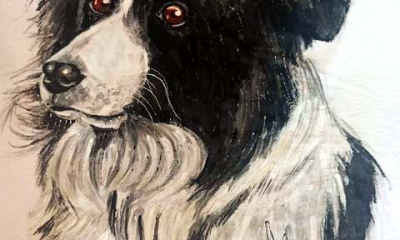
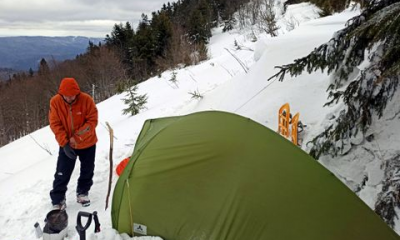
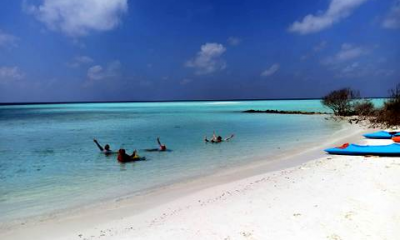
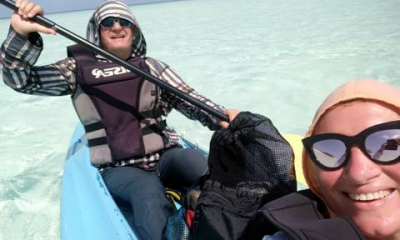
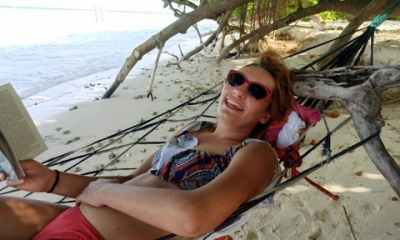
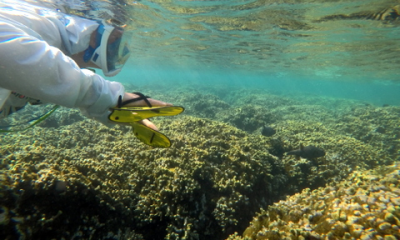
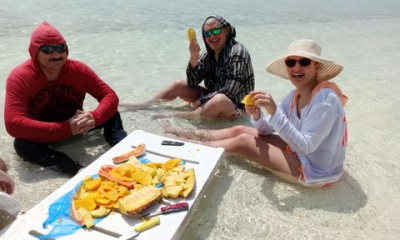
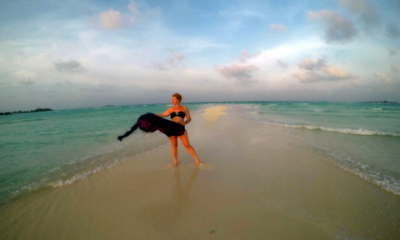
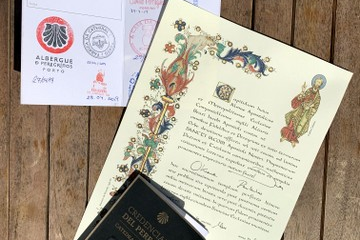
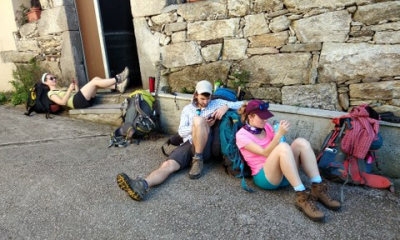
 English
English  Russian
Russian 